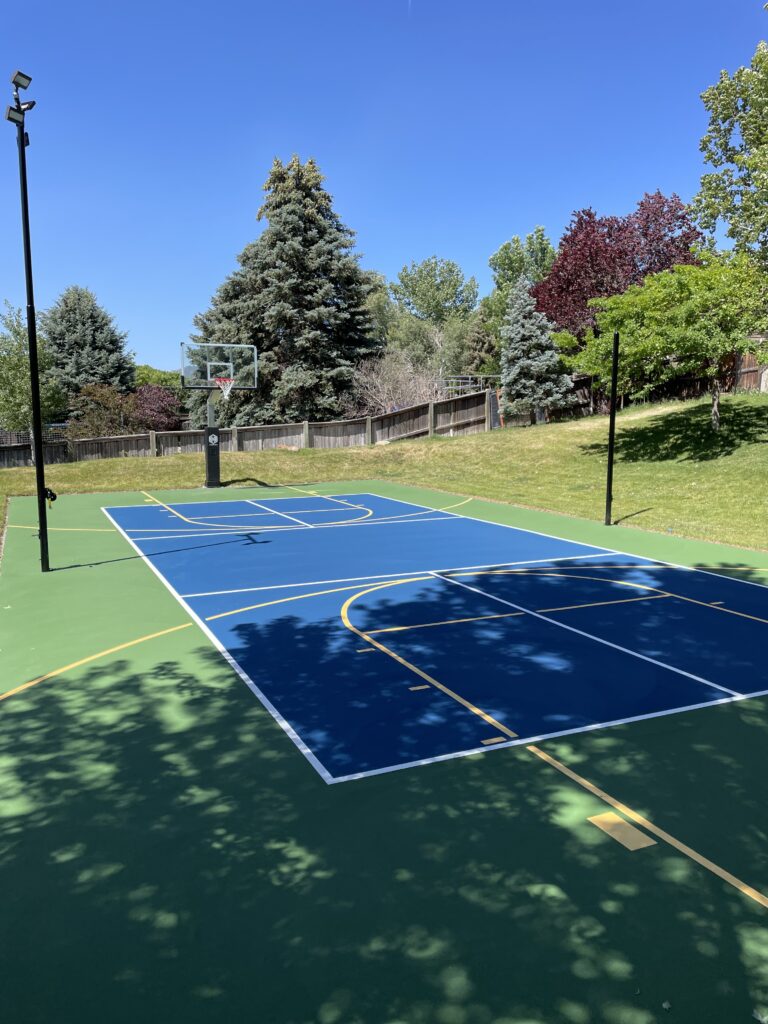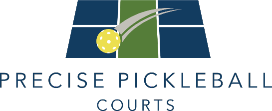Whether you are a homeowner, a school administrator, or a community organizer, maintaining the quality and safety of your outdoor basketball court is essential for ensuring enjoyable gameplay and maximizing the court’s lifespan. In this blog, we will explore the different types of surfaces used for outdoor courts, how often they should be refinished, and how professionals do it.

What is the Best Surface for an Outdoor Basketball Court?
The best surface for an outdoor basketball court depends on various factors such as climate, budget, maintenance requirements, and intended usage. Here are a few popular options:
Concrete: Concrete is one of the most common surfaces for outdoor basketball courts due to its durability and relatively low cost. It can withstand heavy use and is easy to clean.
Asphalt: Asphalt is another popular choice for outdoor basketball courts. It offers good durability and traction for players. Like concrete, asphalt courts require minimal maintenance and are relatively affordable to install.
Acrylic Surfacing: Acrylic surfaces, also known as acrylic coatings or acrylic paint, provide a smoother and more consistent playing surface compared to concrete or asphalt. These surfaces offer excellent traction and can be customized with colors and line markings.
Rubber: Rubberized surfaces are gaining popularity for outdoor basketball courts due to their shock absorption properties, which help reduce injuries and strain on players’ joints. Rubber surfaces are typically made from recycled material and offer good traction in all weather conditions.
Modular Flooring: Modular flooring systems, such as interlocking tiles or snap-together plastic panels, provide a versatile and customizable option for outdoor basketball courts. These systems are easy to install and can be quickly assembled or disassembled as needed.
How Often Should a Basketball Court Be Resurfaced?
The frequency at which an outdoor basketball court should be resurfaced depends on several factors, including the type of surface, level of usage, climate conditions, and maintenance practices. Here’s a general guideline:
Type of Surface
Different surfaces have varying durability and longevity. Concrete and asphalt courts typically require resurfacing less frequently compared to acrylic coatings or rubber surfaces. Concrete and asphalt surfaces may need resurfacing every 5-10 years, while acrylic coatings or rubber surfaces may require more frequent maintenance, typically every 3-5 years.
Level of Usage
Courts that experience heavy use, such as those in public parks, schools, or community centers, will require more frequent resurfacing compared to courts with lighter usage. High-traffic courts are subject to more wear and tear, which can accelerate the deterioration of the surface.
Climate Conditions
Outdoor basketball courts exposed to extreme weather conditions, such as intense sunlight, heavy rainfall, or freezing temperatures, may experience faster deterioration. Harsh weather conditions can cause cracking, fading, or warping of the surface, necessitating more frequent resurfacing.
Maintenance Practices
Regular maintenance can extend the lifespan of an outdoor basketball court surface. Proper cleaning, repair of minor damages, and application of sealants or coatings can help protect the surface and delay the need for resurfacing. Neglecting maintenance can accelerate wear and require more frequent resurfacing.
Outdoor basketball courts should be inspected regularly to assess their condition and determine if resurfacing is necessary. By staying proactive with maintenance and addressing any issues promptly, courts can be a safe and enjoyable playing experience for users.

How Do You Resurface a Concrete Basketball Court?
Outdoor basketball courts are resurfaced through a multi-step process:
- The existing surface is thoroughly cleaned and any debris or dirt is removed.
- Any cracks, holes, or uneven areas are repaired to ensure a smooth playing surface.
- Depending on the type of surface, a primer or bonding agent may be applied to enhance adhesion.
- Once the surface is prepped, a new layer of surfacing material is applied evenly across the court.
- Line markings and any additional features, such as logos or graphics, are then painted onto the surface according to regulation measurements.
- A sealant or topcoat is applied to protect the surface from weathering, UV damage, and heavy use.
Throughout the resurfacing process, attention is paid to detail and quality control to ensure a professional finish and optimal playing conditions. Resurfacing can typically be completed within a few days, depending on the size of the court and weather conditions.
Benefits of Resurfacing Basketball Courts
Some of the benefits of resurfacing outdoor basketball courts include the following:
- Enhanced safety for players by repairing cracks and uneven surfaces.
- Improved playability with a smoother and more consistent surface.
- Extended lifespan of the court by preventing further deterioration.
- Enhanced aesthetics with fresh line markings and vibrant colors.
- Increased property value and community pride.
- Reduced maintenance requirements with a newly sealed surface.
- Optimal performance for players with better traction and ball bounce.
- Compliance with regulations for court dimensions and markings.
- Prevention of water damage and weathering with a new sealant.
- Renewed enjoyment and usage of the court by players of all ages.

Choose Professionals to Resurface Your Basketball Court
At Precise Pickleball Courts, we have become a top name in court resurfacing across Utah. Our basketball court resurfacing services help extend your court’s lifespan, ensuring maximum playtime and ROI. Trusted by homeowners, businesses, and cities, we take pride in delivering quality work to keep your courts pristine.
Contact us today for a free estimate and learn more about how we can revitalize your basketball court!


